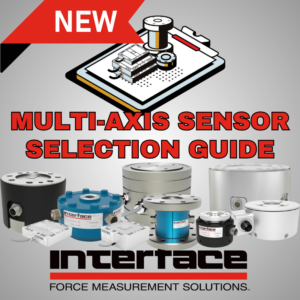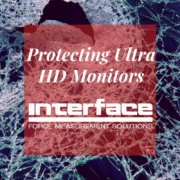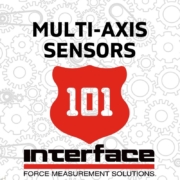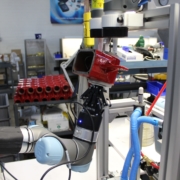New Interface Multi-Axis Sensor Selection Guide
 Interface multi-axis sensors have multiple benefits for test and measurement applications. Beyond providing more data, they consolidate measurement signals and conserve test space.
Interface multi-axis sensors have multiple benefits for test and measurement applications. Beyond providing more data, they consolidate measurement signals and conserve test space.
Interface multi-axis sensors are like other force and torque sensors with strain gage bridges bonded to machined flexures. Each bridge typically defines a measurement axis. Interface offers multiple configurations for 2, 3, or 6-axis options: axial and torque, axial and shear, axial and moment, and all six degrees.
Most force and torque sensors are bidirectional, tension, and compression. Many sensors can be dual or triple-bridge for dedicated or redundant signals. These types of load cells output the same signal and direction of measurement.
Uniquely, multi-axis sensors have additional bridges to provide output signals for varying axes or types of mechanical loading. Interface multi-axis sensors are designed to provide a complete picture of the test article by quantifying reaction loads through the test article on the “non-measure” side.
These specialized load cells are used in various applications across industries, including aerospace, robotics, automotive, and medical device research. These sensors are specifically designed for applications requiring measuring moment and axial loads to determine the center of gravity or misalignment. They are used for tests requiring simultaneous force and torque monitoring, such as bearing test and material test machines, rheometry test machines for rubber testing, or continuous stress testing of equipment like pumps and master key systems. The multi-axis sensor offers better fatigue testing through setup and load verification.
Below is a demonstration using Interface’s 6-Axis Sensor with our BX8 to measure the precise movements of a robotic hand.
For additional information on this type of application, check out Manufacturing: 6-Axis Force Plate Robotic Arm and Using Multi-Axis Sensors to Bring Robotics to Life.
Selecting a Multi-Axis Sensor
To find the suitable multi-axis sensor for your unique requirements, Interface’s latest resource guide is a versatile reference to compare the sensor types, features, capabilities, and options. The Interface Multi-Axis Sensor Selection Guide lets you quickly evaluate the various sensor types based on whether you need a 2-axis, 3-axis, or 6-axis. Reviewing the products based on features and capabilities is easy, including tension and compression, axial torsion, force and torque, side and radial force, compact, temperature compensated, moment compensated, flange mount, or a center through hole.
This new resourceful tool also helps in reviewing various options, including connector protection, connector options, standardized output, TEDS, CANbus, internal shunt cal, custom calibration, multiple bridges, special threads, dual-diaphragm, special temperature range, cable length, and more.
How the Multi-Axis Selection Guide Works
GO TO: Interface Multi-Axis Sensor Selection Guide
STEP ONE: Select the Number Of Axis You Want to Measure
STEP TWO: Identify Multi-Axis Sensor Features And Capabilities
- Axial Torsion
- Center Through Hole
- Compact
- Flange Mount
- Force and Torque
- High Capacity
- Moment Compensated
- Side and Radial Force
- Temperature Compensated
- Tension and Compression
STEP THREE: Choose the Multi-Axis Sensor Options
- Active output ±10V
- Active output ±5V
- Add a connector to a cable
- Cable length
- CANbus
- Connector options
- Connector protection
- Custom calibration
- Dual diaphragm
- Integrated speed and angle measurements option
- Internal Shunt Cal
- Mating cable assembly
- Multiple bridges
- Special temperature range
- Special threads
- Special versions on request
- Speed up to 3000 rpm
- Standardized output
- TEDS
Interface a range of resources related to our multi-axis sensors. Here is a recent webinar that helps give you a background on these sensors and applications and technical tips.
TIP: Find all of the Interface product guides here.
ADDITIONAL RESOURCES
Multi-Axis Sensors Product Brochure
Enhancing Structural Testing with Multi-Axis Load Cells
A Promising Future in Measurement and Analysis Using Multi-Axis Sensors
Mounting Tips for Multi-Axis Sensors
Enhancing Friction Testing with Multi-Axis Sensors
Interface Multi-Axis Sensor Market Research
Dimensions of Multi-Axis Sensors – An Interface-Hosted Forum
Better Data and Performance with Interface Multi-Axis Sensors








